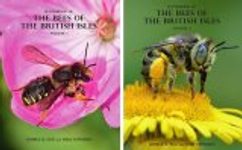About this book
This 88-page full-color book is an in-depth reference based on the principles of integrated pest management (IPM). It includes detailed identification information for wasp, hornet, yellow jacket, and bee species. The risk for stings, swarms, and property damage is discussed and non-chemical recommendations are given if action is appropriate. The spiral–bound, 5-inch by 8-inch book is easy to use when scouting for wasps and bees around the landscape, home, school, or business.
Wasp and Bee Management has 60+ color photographs, plus descriptive profiles of over 22 wasp and bee species, detailing habitat, appearance, behavior, risk level, and more. It also includes instructions on trap-assembly, a checklist outlining seasonal management tasks, an appendix to help identify common species and their risk level, and a list of resources for further information.
Contents
Table of Contents
Acknowledgments
About the Author
Preface
Chapter 1. Wasps and Bees
Managing with IPM
Inspection and Monitoring
Record Keeping
Prevention, Sanitation, and Food Removal
Nest Removal and Exclusion
Trapping
Insecticides for the Control of Wasps and Bees
IPM Checklist for Wasp and Bee Management
(for Buildings and Grounds)
Wasp and Bee Stings
First Response for Wasp and Bee Stings
Steps to Follow if a Person Is Stung
Prevention of Wasp and Bee Stings
Chapter 2. Common Wasps and Bees of the
Northeastern United States
Wasps and Bees Are Beneficial Insects
Paper-Nest-Building Social Wasps (High Risk)
Yellow Jackets
Paper Wasps
European Hornet
Social and Solitary Bees (Moderate Risk)
European Honey Bee
Africanized Honey Bee
Bumble Bees
Carpenter Bee
Solitary Wasps and Bees (Low or No Risk)
Mud Daubers, Potter Wasps, and Mason Wasps
Eastern Cicada Killer Wasp
Scoliid Wasps
Spider Wasps
Ground-Nesting Bees
Giant Resin Bee
Appendix: Quick ID of Wasps and Bees and Sting Risk Level
References
Additional Resources
Customer Reviews
Biography
Jody Gangloff-Kaufmann is a Senior Extension Associate with the New York State Integrated Pest Management (IPM) Program at Cornell University and specializes in urban entomology and community IPM. She earned her Ph.D. from the Department of Entomology at Cornell University in the field of agricultural entomology. She was inspired to pursue her degree by Bernd Heinrich’s book entitled Bumblebee Economics.























